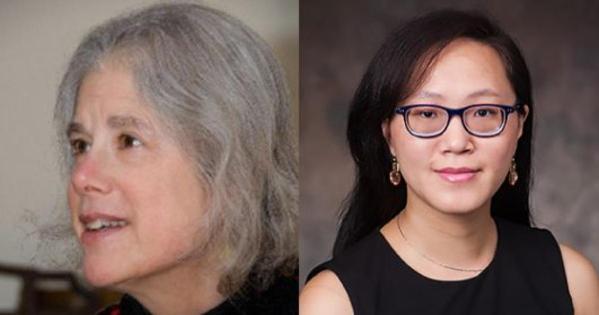SPA Researchers Explore the Labor Market for Public-Sector Nurses

The pandemic’s economic disruption and recovery have revived common interest in the changing labor market, as the demand for workers raises competition and wages. A timely study by SPA Professor of Public Administration and Policy Laura Langbein and Lecturer Fei Wang Roberts (SPA`21) explores these forces as they apply to registered nurses working not only in the public sector, but also in the private and nonprofit sectors.
In “Money Matters: Sector Differences, Competition, and the Public Personnel System,” published August 5 in The American Review of Public Administration, Langbein and Roberts used 2016-17 American Community Survey data to track whether private and nonprofit sector wage activity matters to nurses, and whether public personnel systems respond to wage changes in the other two sectors. They found that higher wages in the for-profit sector drive up wages in the other two, and vice versa.
The authors focused on registered nurses, who have specialized training and more discretion than those in other categories, to capture their unique public service motivation.
“Registered nurses really have to want to be nurses,” said Langbein, “which gets at the role of what is called intrinsic motivation, or why you want to do what you're doing. They all want to work with patients and make patients better.”
These public sector RNs, who might practice or conduct research for public health departments, armed services hospitals, or the National Institute of Health, appear to shop across sector for opportunities. Therefore, the authors argue, public administration scholars should look beyond the public sector when tracking or predicting wage activity, by widening existing pay comparability studies to include nearby private sector opportunities.
“The public administration field tends to ignore intersection competition, the competition between the nonprofit sector, the private sector, and the public sector,” said Langbein. “But the nurses, the labor, do not ignore it.”
Nursing as a profession is heavily female, she added, and research has suggested that women are more likely to consider family needs, like pay and geography, when choosing a job.
“From the point of view of labor economics,” said Langbein, “which is broader than that of public administration, nurses deciding where they should work will look at the opportunities in their local area of residence. They don't really care about sector when they look at the job; they look at how much money they are going to make.”
Langbein and Roberts noted that common attitudes towards the public sector create the expectation that public personnel systems are inefficient and inflexible compared to the private market.
“In public administration literature, we have a concept called anti-public-sector bias,” said Roberts. “Many people in this country hold a negative opinion regarding public organizations or bureaucracies, [considering them] inefficient, wasteful, and poor-performing, even though there might be a lack of evidence suggesting that.”
Civil service systems, she added, have lots of rules about hiring, firing, and tenure, which some assume lead to a less-competitive environment. Their paper, however, disproves the myth, at least in the context of registered nurses.
"`If wages in the private sector are an indicator of value to the employer,’" said Langbein, quoting the article, "`it's hard to argue that they have a completely different meaning in the public sector.’”
The pair began the project in the fall of 2019, before COVID affected both the demand for nurses and the potential workplace risks of nursing.
“We cite some recent research showing that the pandemic has created a sudden demand for nurses, and particularly registered nurses, for reasons that should be pretty obvious,” said Langbein. “But I think it's too soon to actually look at its impact on the nurses' market.”
Roberts, who began her tutelage under Professors Anna Amirkhanyan and Langbein as a doctoral student, earned her degree in July, and accepted a position of lecturer with SPA. She looks forward to future projects as colleagues, including a forthcoming paper with Langbein comparing motivation and discretion levels among teachers and principals, and another with SPA coauthors Amirkhanyan and Ken Meier on public perceptions of government’s COVID response efforts.
SPA’s efforts to provide an incubator for student research follow a long academic tradition. In fact, Langbein said, she taught Meier, initiating a chain of mentorship that both have continued ever since, prioritizing the professional advancement of doctoral students under their wing.
“The professors here are very productive,” said Roberts. “We have lots of things we are working on. I am happy to be a part of it.”
